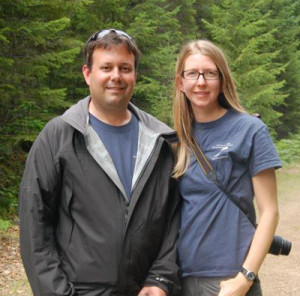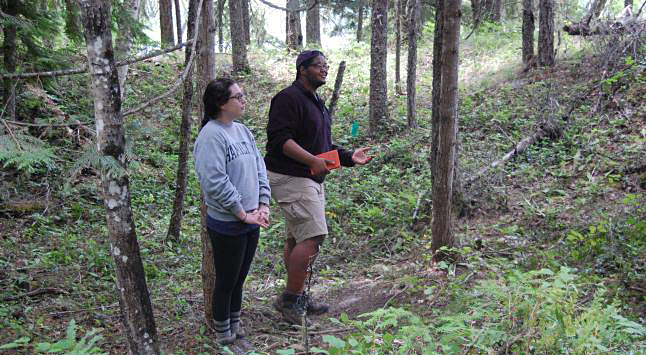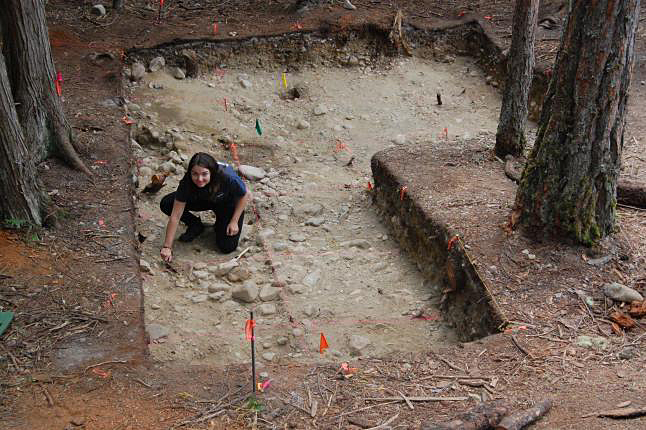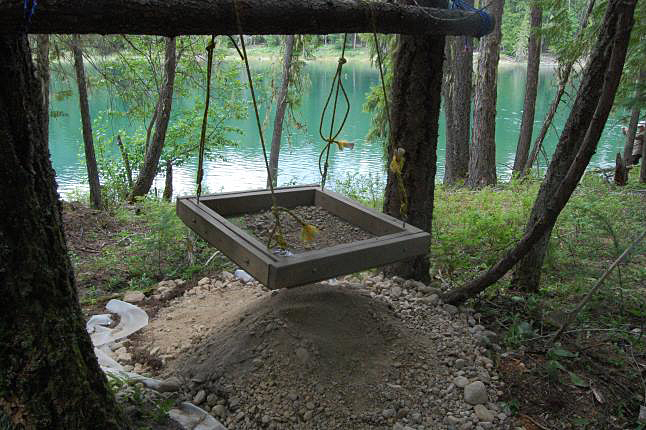
By Laura Stovel
LEMON CREEK — An archaeological field school from Hamilton College in New York spent this past month at a site near this stream south of New Denver and Winlaw, carefully studying the remains of aboriginal pithouses some, of which date back an estimated 3,800 years. The aboriginal people who lived at the site are likely the ancestors of the Sinix’t people who inhabited the territory along the Columbia River from just north of Revelstoke to Kettle Falls.
The Lemon Creek site contains 32 pithouse indentations, some of which the archaeologists estimate housed up to 55-60 people. Carbon dating shows that the pithouses were used up to the late 170s when the first of many small pox epidemics devastated First Nations populations in the region.
The archaeologists estimate that these pithouses are only a small portion of the pithouses in the area. 85-95% of the pithouse and other significant archaeological sites were destroyed with the construction of the railway and the flooding of the Columbia River.
Anthropologists Nathan Goodale and Alissa Nauman, who lead the field school, will be speaking at the Revelstoke Museum and Archives on Monday, July 29 at 7 pm. (Please click here to view a poster for this event.)
Here are some additional photos from this archaeological site:






